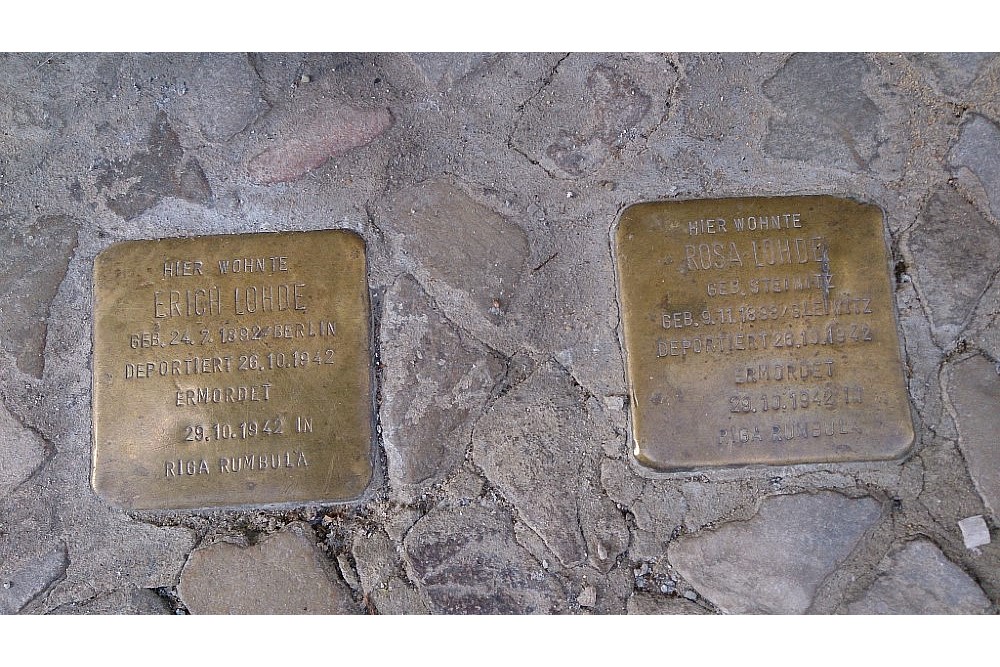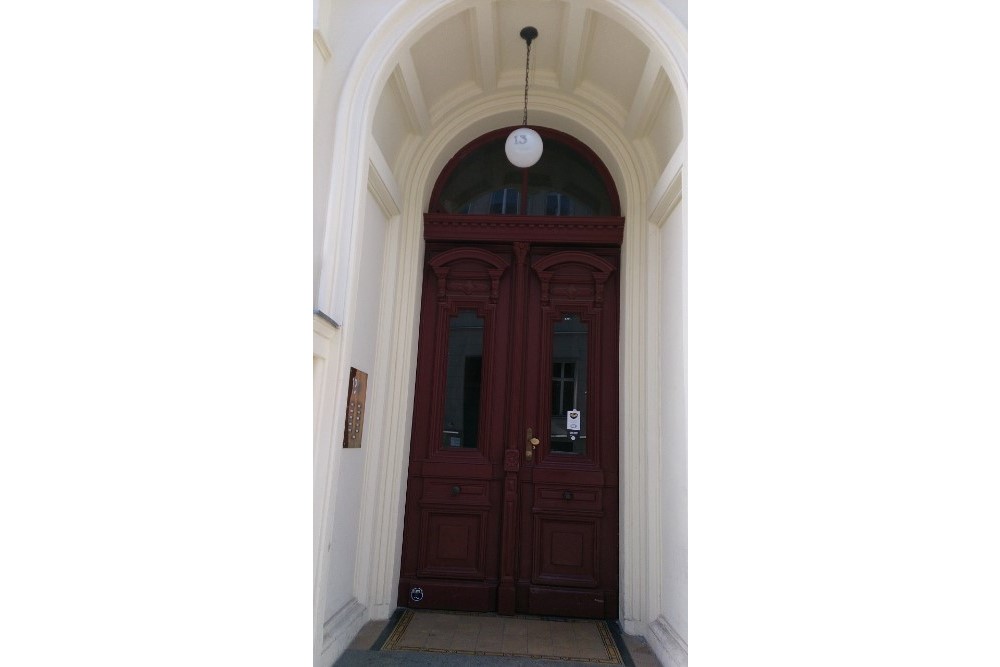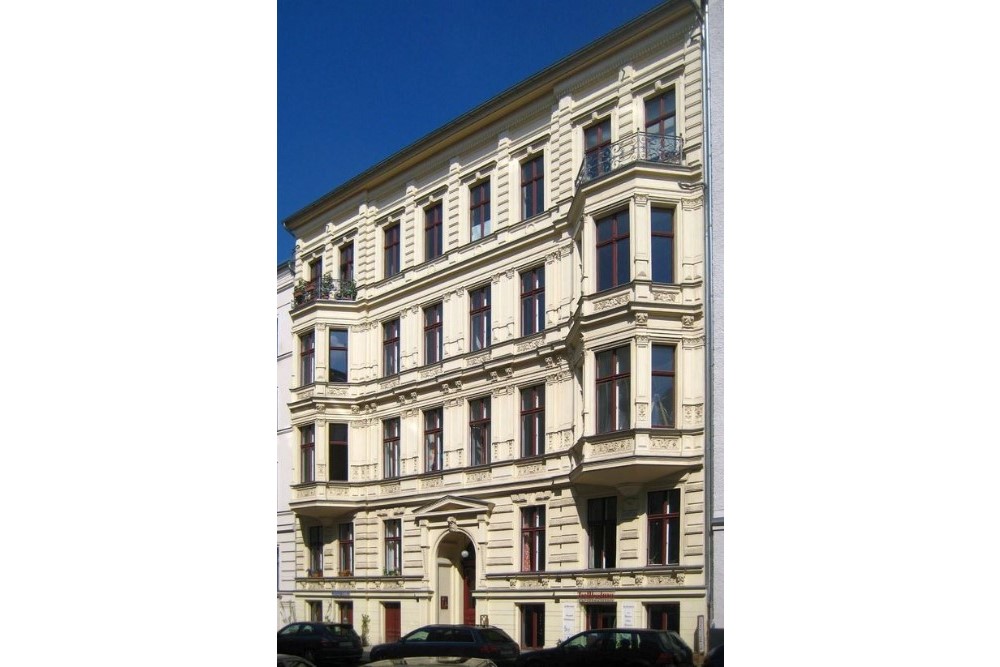Stumbling Stone Krausnickstraße 13
These small, brass, memorial plaques (Stolpersteine or stumbling stones) commemorate:
* Erich Lohde, born 24 July 1892 Berlin, deported 26 October 1942, murdered 29 October 1942 in Riga Rumbula.
* Rosa Lohde née Steinitz, born 9 November 1898 Gleiwitz, deported 26 October 1942, murdered 29 October 1942 in Riga Rumbula.
Both Erich and Rosa Lohde were born in Germany – he in Berlin, and she in Gleiwitz. Little other information was found about their lives except that Rosa was previously divorced from a man named Schmidt. According to the German Memorial Book [Bundesgedenkbuch], Rosa was a resident of both Berlin (Wilmersdorf) and Berlin (Mitte), and Erich was a resident of Berlin (Kreuzberg).
They lived in an apartment here at Krausnickstraße 13 in Berlin-Mitte. This building, constructed in 1881, is today part of a protected historical district in the Spandau area.
Erich and Rosa’s last days were documented. They were both deported on Transport 22 from Berlin on 26 October 1942 with nearly 800 others, including 88 children under the age of 15. They were all packed into third-class passenger cars and arrived outside of Riga 3 days later. According to Yad Vashem, "All deportees were shot in the Rumbula and Bikernieki forests shortly after their arrival."
The Lohde stolpersteine were installed relatively early in the project, as seen in the city and complete date of birth: most stolpersteine have only the year of birth.
"Stolpersteine" is an art project for Europe by Gunter Demnig to commemorate victims of National Socialism (Nazism). Stolpersteine (stumbling stones) are small, 10x10cm brass plaques placed in the pavement in front of the last voluntary residence of (mostly Jewish) victims who were murdered by the Nazis. Each plaque is engraved with the victim’s name, date of birth, and place (mostly a concentration camp) and date of death. By doing this, Gunter Demnig gives an individual memorial to each victim. One stone, one name, one person. He cites the Talmud: "A human being is forgotten only when his or her name is forgotten."
Do you have more information about this location? Inform us!
Source
- Text: Anne Palmer
- Photos: Mary Bianchi (1, 2), Jörg Zägel (3)
- Yad Vashem Central Database of Shoah Victims’ Names
- Yad Vashem Deportation Database
- Landesdenkmalamt Berlin: Krausnickstraße 13
- Stolpersteine.eu
Nearby
Museum
- Anne Frank Centre - Berlin
- 0.3 km
- Otto Weidt’s Workshop for the Blind - Berlin
- 0.3 km
- German Historical Museum (Zeughaus Berlin) - Berlin
- 0.8 km
Point of interest
- Bullet Impacts Große Hamburger Straße 28 - Berlin
- 0.1 km
- New Synagogue - Berlin
- 0.3 km
- Former Gestapo Office Berlin - Berlin
- 0.4 km
Monument
- The Missing House - Berlin-Mitte
- 0.1 km
- Memorial Regina Jonas - Berlin-Mitte
- 0.1 km
- Memorial Jewish Boys’ School - Berlin
- 0.1 km
Cemetery
- German War Graves Dorotheenstädtischer Friedhof - Berlin
- 1.0 km
- Jewish Cemetery Schönhauser Allee - Berlin
- 1.5 km
- Invalidenfriedhof - Berlin
- 2.0 km
Remembrance Stone
- Stumbling Stones Große Hamburger Straße 31 - Berlin-Mitte
- 0.0 km
- Stumbling Stones Große Hamburger Straße 33 - Berlin-Mitte
- 0.1 km
- Stumbling Stones Krausnickstraße 8 - Berlin-Mitte
- 0.1 km







